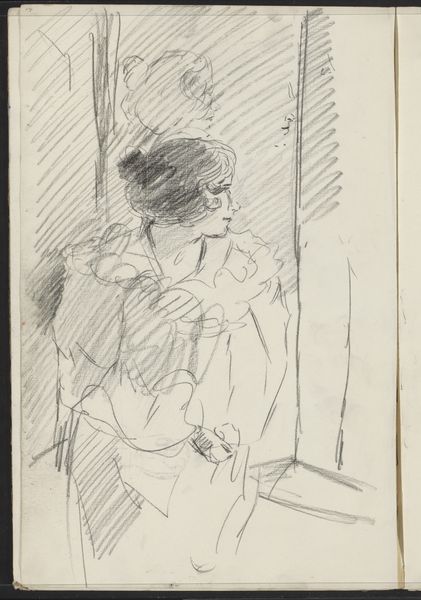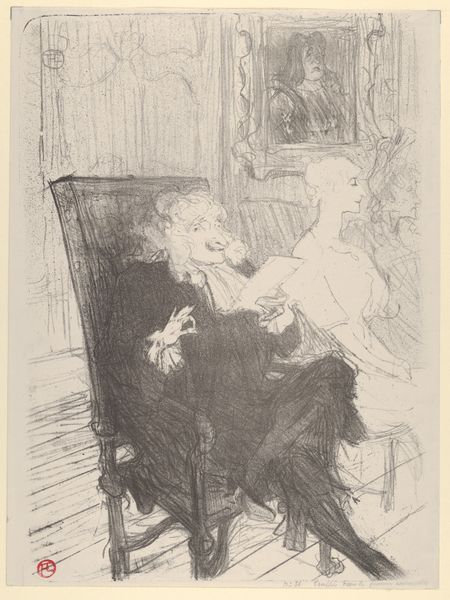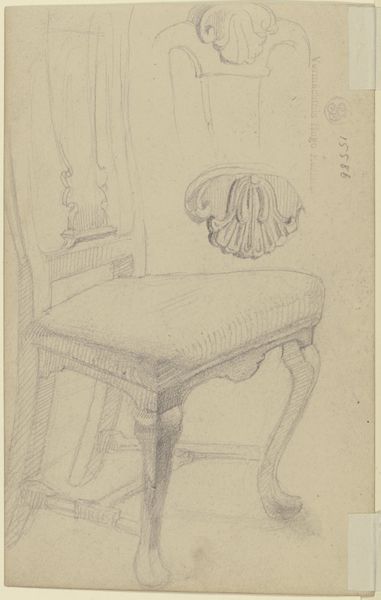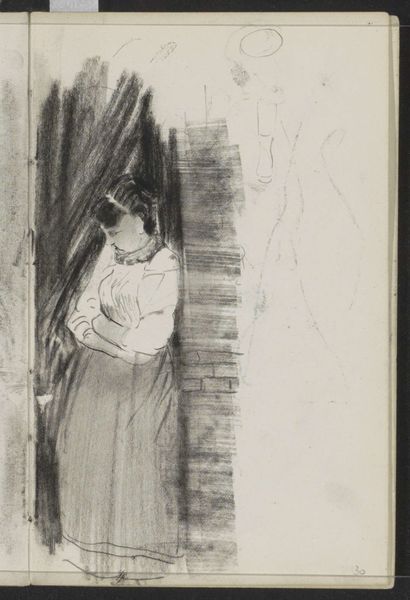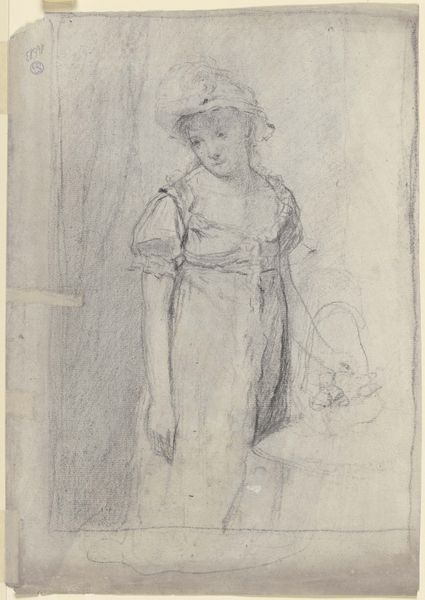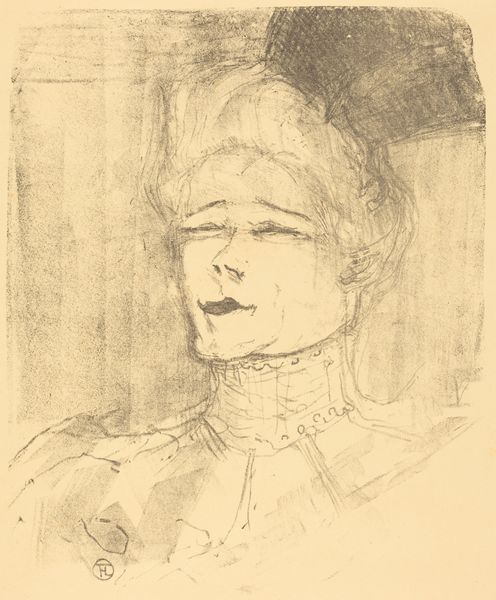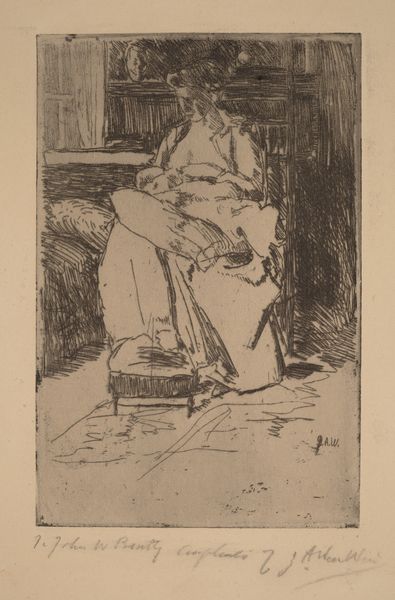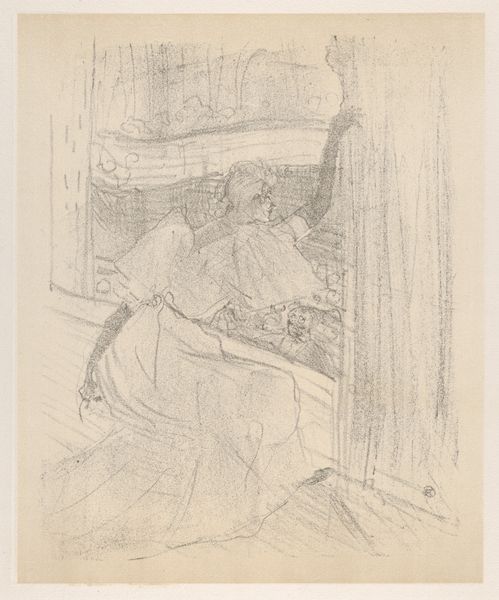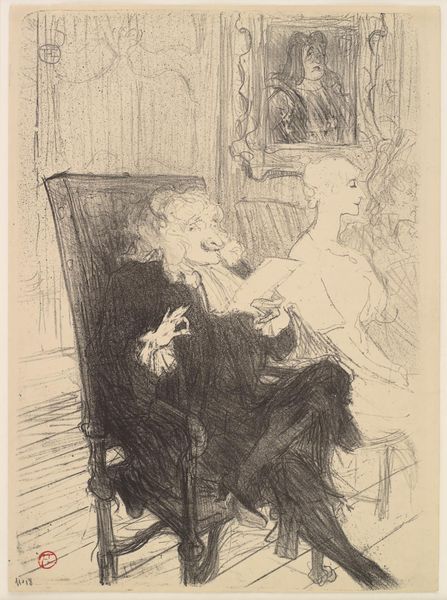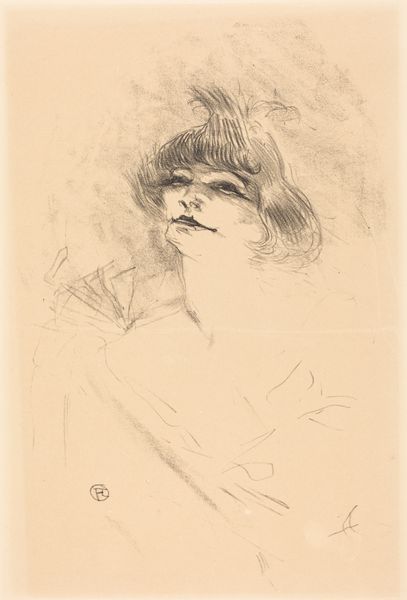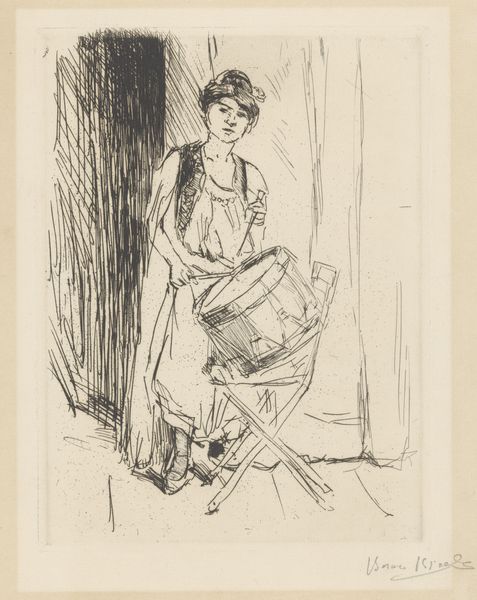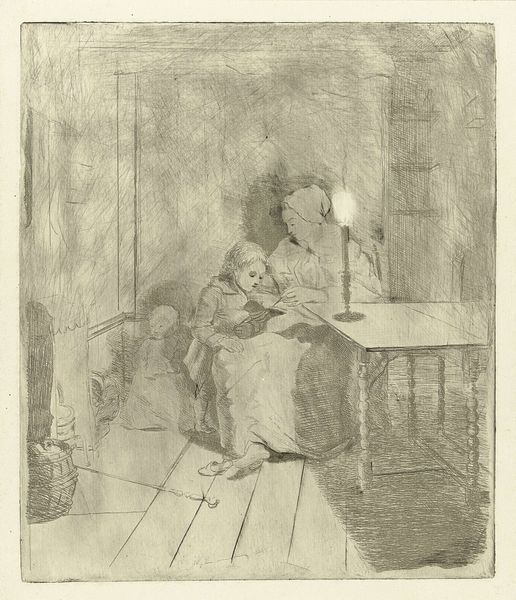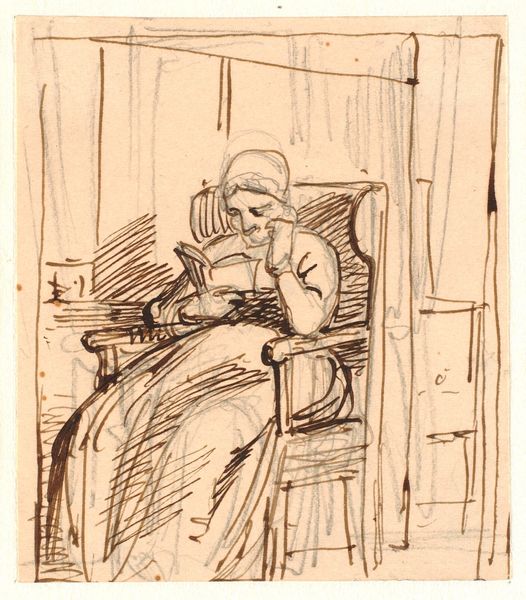
Dimensions: sheet: 18 11/16 x 14 in. (47.5 x 35.5 cm) image: 15 3/16 x 10 1/4 in. (38.5 x 26 cm)
Copyright: Public Domain
Curator: At the Brasserie Hanneton, crafted in 1898 by Henri de Toulouse-Lautrec. It's a pencil drawing, really more of a sketch than a highly finished piece, currently held here at the Metropolitan Museum of Art. Editor: Immediately, I'm drawn to the woman's large hat – it has a quality of protection or performance, perhaps? It suggests a certain social role or constructed persona. Also the atmosphere feels quite melancholic to me, despite the setting of a Brasserie. Curator: Absolutely. The brasserie, often a vibrant, public space, takes on a different feel through Lautrec's hand. Her hat, it seems, is indeed more mask than simple fashion statement. Look closely at the accoutrements scattered on the table – playing cards or dominoes, half-empty beverages, and even a small figurine – and the symbols amplify a pervasive atmosphere of solitude amid plenty. Editor: It is such a masterful example of impressionistic mark-making as well. The details that emerge are rendered so rapidly – especially that peculiar figurine. Is that a sort of dancing bear? Or perhaps a memento, imbued with layers of memory? Curator: Perhaps both! The sketch's ethereal nature also calls to mind other visual tropes from history like memento mori – with each object on the table as a placeholder. Note too the composition, a clear foreground of consumed or half-finished drinks set apart against a vanishing background that disappears off the page. In this sense, he uses graphic organization in addition to imagery to give his piece meaning. Editor: I see how the sketch itself captures fleeting moments and the transience of experience. Do you think there's a critique, too, implied through its almost unrefined lines? Curator: Critique is at the heart of Lautrec's project. But he manages to do so in such a subtly empathic and disarming manner. The work captures not only observation, but introspection, empathy and possibly projection on the part of the artist. He manages to convey both what he sees and what it makes him feel. Editor: Right, that interplay. In just a few strokes he shows this scene—and through the filter of emotion and his experience. You've given me so much to ponder in that little sketch, thank you. Curator: And thank you for providing your fresh and intuitive perspective.
Comments
No comments
Be the first to comment and join the conversation on the ultimate creative platform.
